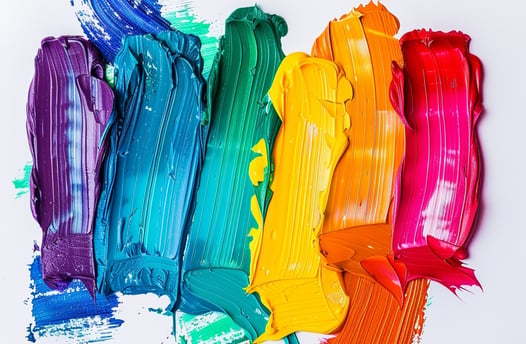Harnessing Color Theory for Miniature Painting
This blog post delves into the principles of color theory and its application in miniature painting. It covers fundamental concepts such as hue, saturation, value, and color harmony, providing guidance on creating harmonious color schemes. Through exploring various color combinations and techniques, you can elevate your miniature painting projects by evoking specific moods and enhancing visual impact.


Color theory serves as the cornerstone of artistic expression, guiding painters in their quest to evoke emotion, depth, and realism. For miniature painters, understanding and applying color theory can elevate their creations from mere figures to captivating works of art. In this guide, we'll delve into the principles of color theory and explore how to harness its power to master the art of miniature painting.
Understanding Color Theory: Color theory is the study of how colors interact and affect each other, encompassing concepts such as hue, saturation, value, and color harmony. By understanding these principles, miniature painters can create compelling color schemes, evoke specific moods, and enhance the visual impact of their creations.
Hue refers to the pure spectrum colors, such as red, blue, and yellow, which form the basis of all other colors. Saturation refers to the intensity or purity of a color, with highly saturated colors appearing vivid and vibrant, while desaturated colors appear muted or washed out. Value refers to the lightness or darkness of a color, with lighter values appearing closer to white and darker values closer to black.
Creating Harmonious Color Schemes: One of the key applications of color theory in miniature painting is creating harmonious color schemes that enhance the overall aesthetic of the miniature. There are several methods for achieving color harmony, including complementary, analogous, and monochromatic color schemes.
Complementary color schemes involve using colors that are opposite each other on the color wheel, such as red and green or blue and orange. These schemes create strong contrast and visual interest, making them ideal for highlighting specific elements or creating dynamic compositions.
Analogous color schemes involve using colors that are adjacent to each other on the color wheel, such as blue, green, and turquoise. These schemes create a sense of harmony and cohesion, making them well-suited for creating naturalistic or serene compositions.
Monochromatic color schemes involve using variations of a single color, such as different shades of blue or green. These schemes create a sense of unity and simplicity, making them ideal for minimalist or thematic compositions.
Applying Color Theory to Miniature Painting: When applying color theory to miniature painting, consider the context and theme of the miniature, as well as the desired mood or atmosphere. Experiment with different color combinations and techniques to find the ones that best suit your vision and objectives.
Pay attention to the relationship between colors and how they interact with each other on the miniature's surface. Consider factors such as lighting, texture, and scale when choosing and applying colors, as these can influence the perception and impact of the final result.
Conclusion: By mastering the principles of color theory and applying them to your miniature painting projects, you can unlock a world of creative possibilities and elevate your craft to new heights. Experiment with different color schemes, techniques, and applications to discover the power of color in miniature painting. With practice and patience, you'll be able to create captivating works of art that showcase your skill and creativity. Happy painting!
